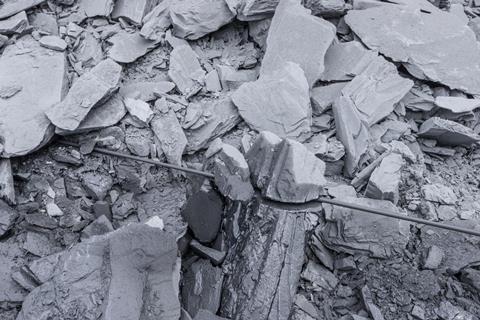Steve Pearson explains why specifying natural slate over alternative roofing materials can help to reduce the embodied carbon of a building

The effects of the global climate emergency have become obvious in recent years, with extreme weather now a common occurrence. Whilst the causes for this are varied, the UK Green Building Council (UKGBC) has estimated that 25% of the country’s greenhouse emissions come from the building sector.
There are two types of carbon emissions associated with buildings: operational carbon and embodied carbon. Operational carbon often provides headline-grabbing statistics about emissions from heating, lighting and powering buildings. However, the UKGBC has noted that operational emissions are likely to reduce as buildings become more efficient and the use of renewable energy grows.
Consequently, embodied carbon is receiving greater attention, with an estimated 50% of built environment emissions expected to come from embodied carbon by 2035.
Embodied carbon represents the impact associated with extracting raw materials, manufacturing building components, transporting them to site and installing them. This also includes end-of-life emissions generated from the disposal or recycling of materials.
In response, the University of Bath evaluated the carbon impact of different roofing materials as part of its Inventory of Carbon and Energy (ICE) project.
50% of built environment emissions [are] expected to come from embodied carbon by 2035
The study included clay, concrete and limestone tiles as well as copper, lead and slate. The embodied carbon per square metre of roof area (KgCO2/m2) was calculated for each material. Slate was found to be just 0.15-1.62 KgCO2/m2 compared with 10 and 27 KgCO2/m2 for concrete and clay respectively. Copper was calculated to have 20-28 KgCO2/m2 and lead 41 KgCO2/m2.
The range of results represents the substantial differences between the source materials and their individual production processes. For example, clay tiles are kiln-fired, requiring a great deal of energy to turn them into a durable material, despite utilising a natural product as its base.
Natural slate, once quarried or mined, needs comparatively little processing before it can be used on a roof. Furthermore, much of the process is still done by hand and water is often the only necessary treatment.
The University of Bath’s research also shows that the production of slate produces less air pollution and uses less water than other roofing materials in the study.
The relative lifespan of the materials should also be taken into account when considering embodied carbon. Natural slate, an incredibly hard rock compressed over millions of years, can be guaranteed for a century by some producers. A clay tile on the other hand may last only 30 to 60 years and the quality can vary greatly.

The longevity of natural slate also means that it can be reclaimed and reused should the building be demolished, whicih promotes circular resource management, a principle that aims to keep materials in use for as long as possible. The advantage of recycling slate, from an embodied carbon perspective, is that it has to undergo minimal transformation to be reconditioned for reuse. This differs from metal roofing solutions, such as lead, which are widely recycled and reused but require a lot of energy to melt and reform into a new sheet.
With the UK’s aim to achieve net zero by 2050, careful evaluation of both embodied carbon and operational carbon is necessary. Whilst still in the early stage of its progress through parliament, the Carbon Emissions (Buildings) Bill aims to set maximum levels of whole life carbon for buildings and make its calculation and reporting mandatory as part of building regulations for England and Wales. If the bill is implemented in full, it will place an as yet undefined limit on the whole life carbon impact of projects and require developers of buildings over 1,000m2, or ten dwellings, to calculate and report on this before work begins. Once completed, developers will then be required to report accurately on whether the building is delivering as intended.
Due to the nature of embodied carbon, selecting the right product supplier can have a large impact. This is because the individual practices of a supplier can have a dramatic effect on a product’s embodied carbon value, even if the materials used were low in embodied carbon prior to the point of production. One of the key factors to consider is how a supplier is working to reduce the environmental impact of its business operations. This may manifest itself in the method used to transport goods, minimise waste materials or implement closed circuit systems for the reuse of water.
ISO 14001 certification demonstrates a commitment to monitor and minimise environmental impact. Similarly, carbon neutral status is awarded to those that have reduced or offset their emissions; either by implementing efficient strategies in their own processes or via enabling projects that actively reduce the effect of global emissions.
The issue of whole life carbon, and embodied carbon specifically, is going to feature higher on the architect’s agenda. With its low embodied carbon, natural slate is an ideal choice for those consciously trying to reduce the environmental impact of a project.
Postscript
Steve Pearson is the UK director at Cupa Pizarras
















No comments yet